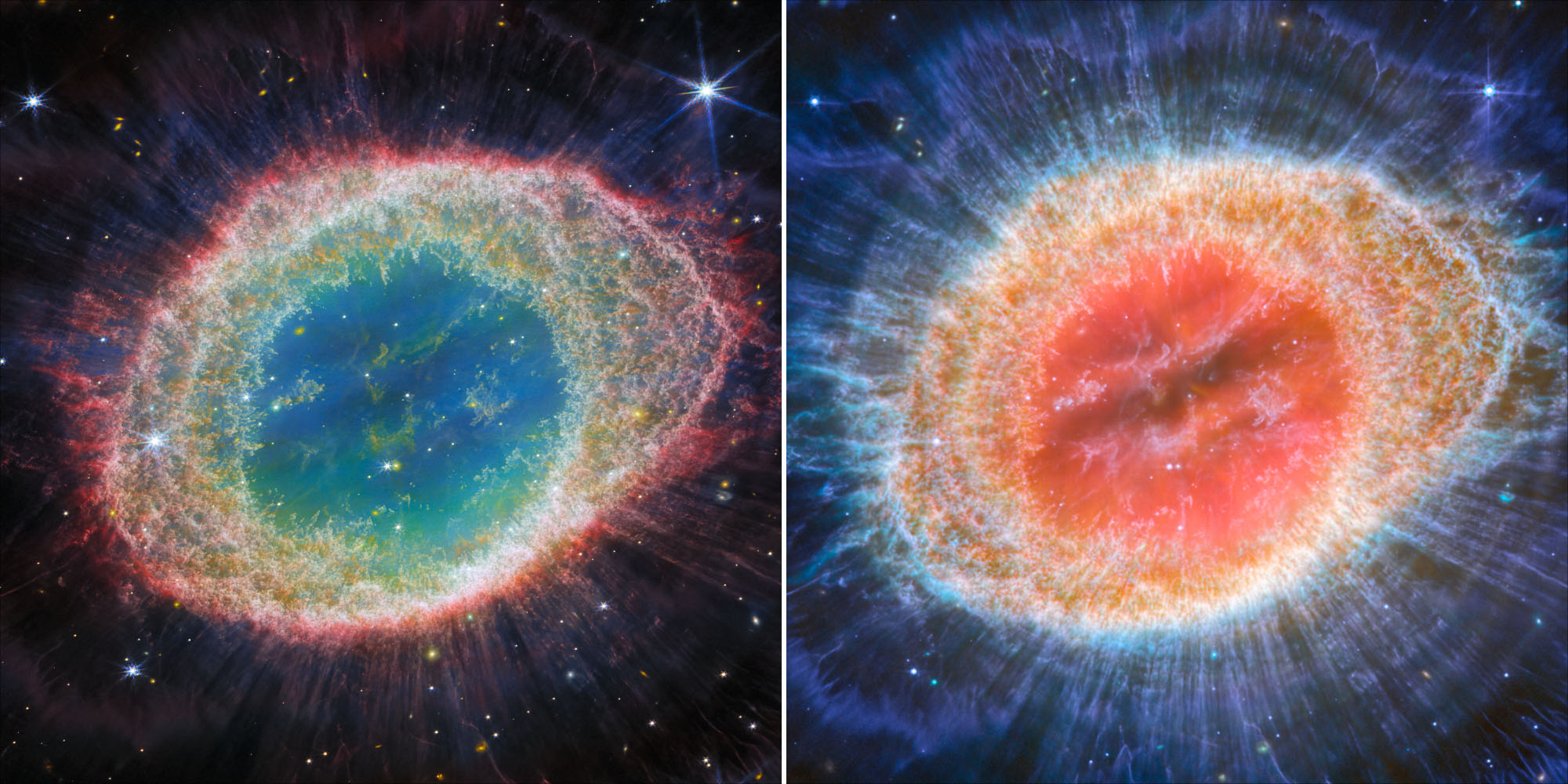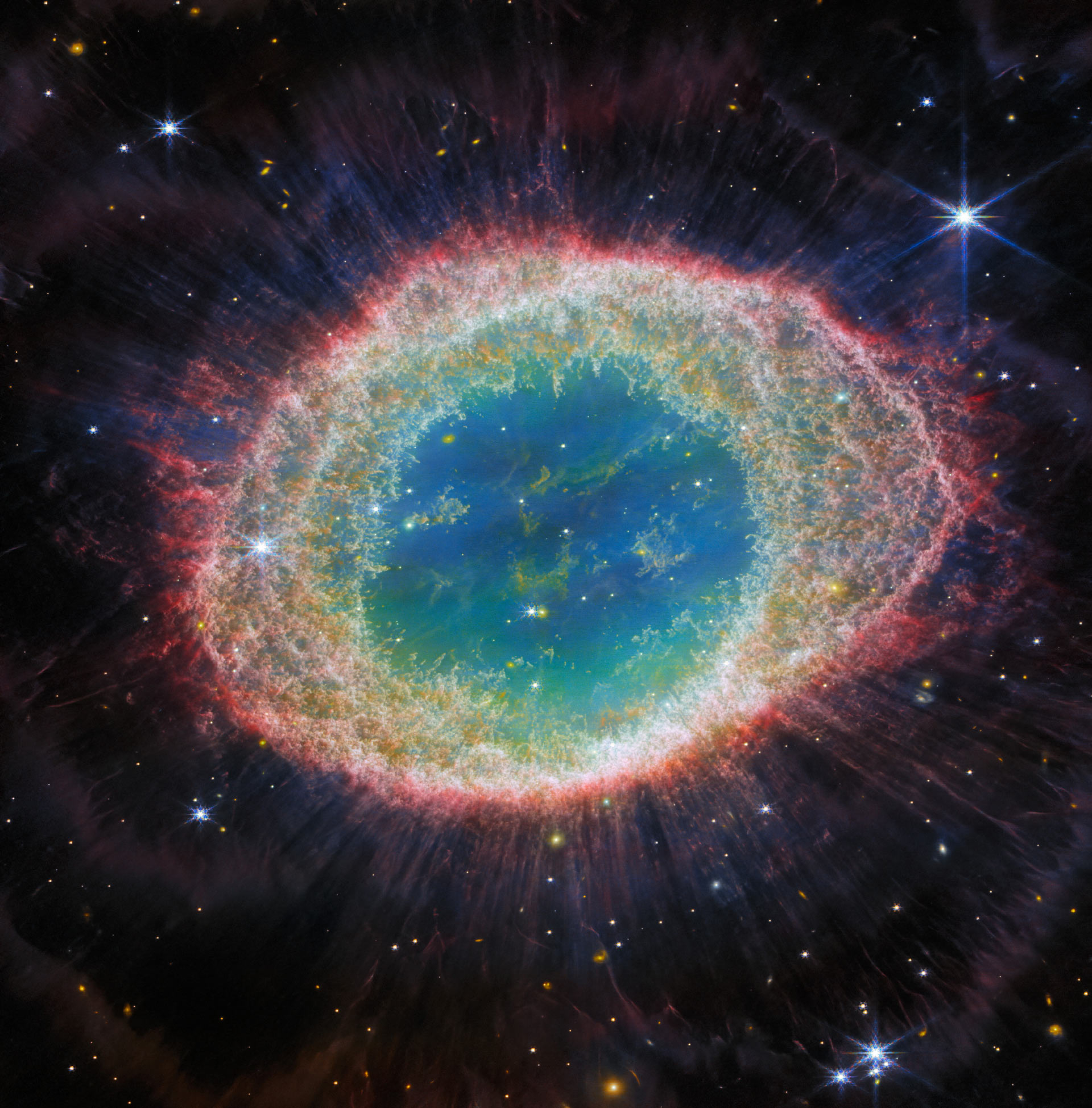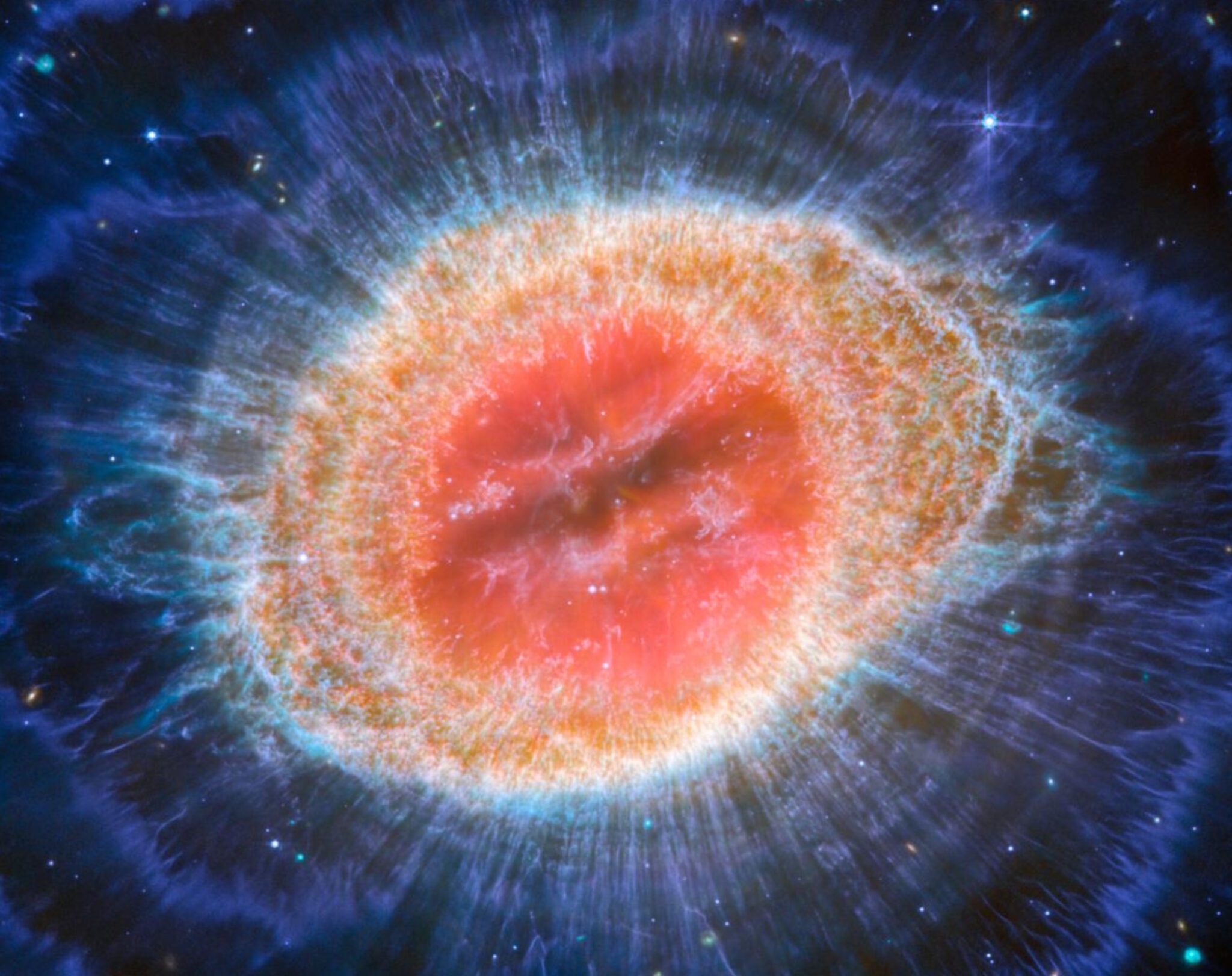The Ring Nebula is a typical representative of planetary nebulae located at a distance of about 2500 light-years in the constellation Lyra. This object, also known as Messier 57, M57 or NGC 6720, was discovered by French astronomers Antoine Darquier de Pellepoix and Charles Messier in 1779. Two astronomers stumbled upon the Ring Nebula when they were trying to study the path of comet Bode, which flew very close to it, moving through the sky. On August 21, 2023, scientists announced that the James Webb Space Telescope had once again achieved success, obtaining an incredibly detailed photo of the iconic cosmic halo.

This should not be confused with one of the first JWST images, the Southern Ring Nebula. The Ring Nebula, also known as Messier 57, is one of the most famous examples of planetary nebulae. However, these objects actually have nothing to do with planets. Planetary nebulae are, in fact, regions of cosmic gas and dust that are formed from the outer shells of dying stars.
“Planetary nebulae were once thought to be simple, round objects with a single dying star at the center. They were named for their fuzzy, planet-like appearance through small telescopes,” says Roger Wesson from Cardiff University.

Just a few thousand years ago, Messier 57 was a red giant that lost most of its mass. As a kind of farewell, the hot core now ionizes the ejected gas, and the nebula emits colored light.
Modern observations show that most planetary nebulae have an incredibly complex structure. The question arises: how does a spherical star form such complex, irregular structures? The Ring Nebula is an ideal target for solving this mystery. It is located quite close and has a high brightness. It can be seen even with binoculars on clear summer nights in the north and most of the southern direction.
Detailed view of the Messier 57 structure
The Ring Nebula has the shape of a curved donut. Our survey is directed almost directly at one of the poles of this structure. Although the center of this donut may seem empty, in fact it is filled with lower density matter that moves both in our direction and in the opposite direction, creating a shape similar to a rugby ball stuck in the central slot of the donut.

The Ring Nebula contains about 20 thousand dense molecular clouds rich in hydrogen. At the same time, the inner region is marked by the presence of hot gas. The main rim has a thin ring that consists of the emission of carbon molecules known as polycyclic aromatic hydrocarbons.
There are approximately ten concentric arcs around the perimeter of the main ring. It is assumed that these arcs arose due to the interaction of the central star with a low-mass companion rotating at a distance similar to the distance from Earth to Pluto.
The brightest part of the nebula is the colored main ring. It consists of gas ejected by a central star that is on its way to becoming a white dwarf — a small, dense and hot body that is the final stage of evolution for stars like our Sun.
Nebulae like Messier 57 are a kind of astronomical archaeology, allowing astronomers to learn more about the star that gave birth to this huge nebula.
Earlier we reported on how James Webb spotted the farthest star in the Universe.
According to webbtelescope.org
Follow us on Twitter to get the most interesting space news in time
https://twitter.com/ust_magazine

